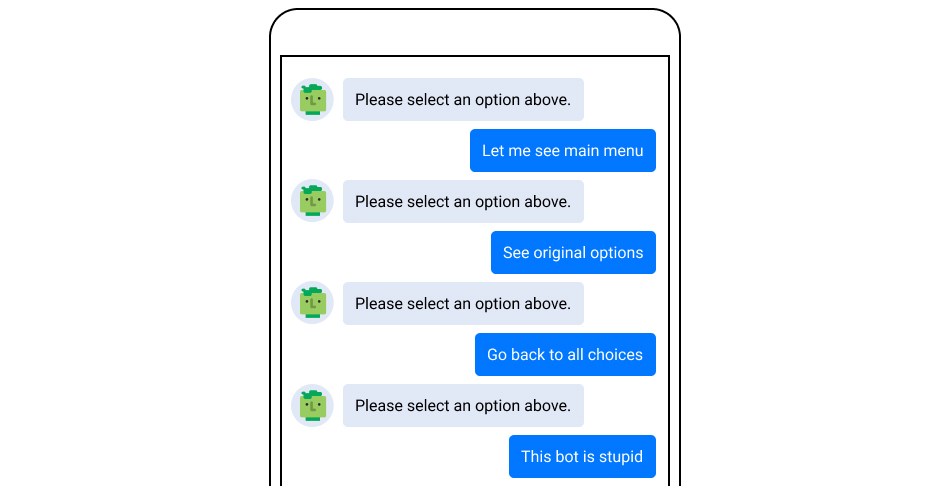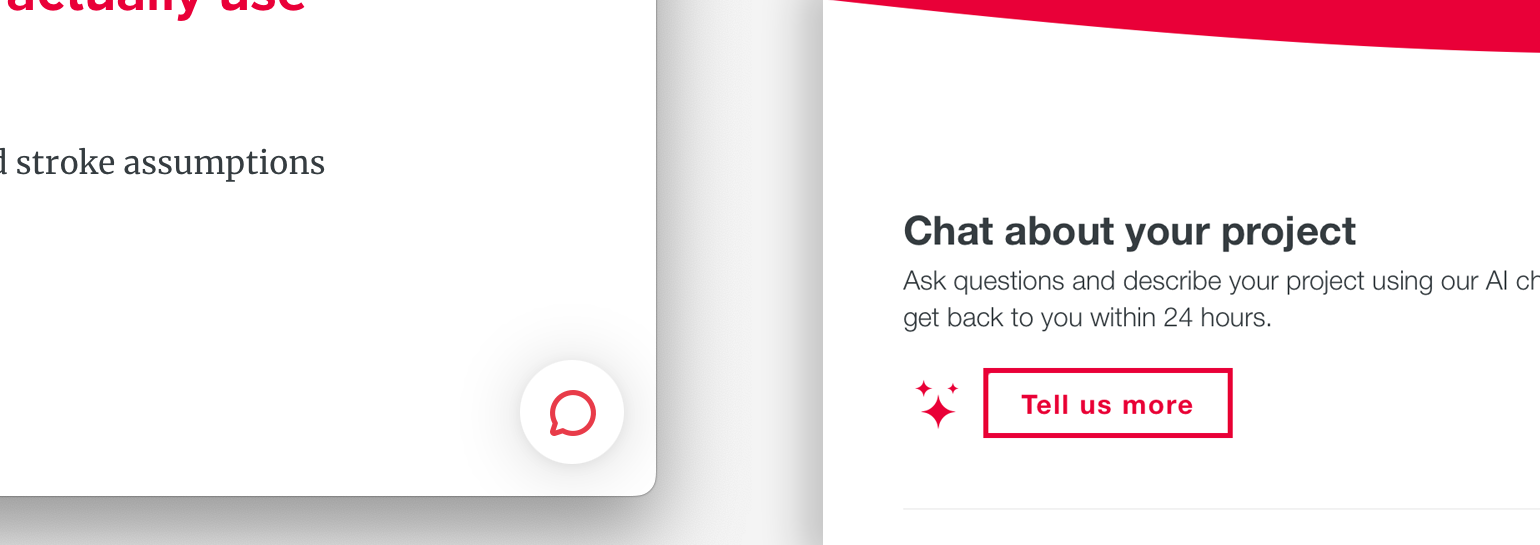AI Chatbots: Seizing the Opportunity to Overcome Stigmas
Chatbots have existed in various forms for more than two decades, gaining a reputation for being sluggish and unhelpful, often marred by poor user experiences. However, like many other areas, AI is revolutionising the chatbot. Despite significant advancements, their reputation has yet to catch up.
Typically, most people born in the last 40 years will be reluctant to make or take phone calls unless they are necessary. Wanting to know the shipping time for a pair of shoes, finding the opening hours for a restaurant, or even getting some basic information about a digital agency like Friday is not something we want to discuss with a human unless we need to. We are time-poor, impatient, and expect instant gratification. Trawling websites for answers is not efficient, and designers need to be cognisant of this when creating interfaces.
We’re all familiar with that little floating icon on the bottom right of many websites. Live Chat, Online Support, Ask an Agent… you know the one; we have one below on this website. Maybe you are unlikely to use it? Does it usually end with your laptop being smashed against the wall in a very costly surge of high negative emotion?

Historical Stigma
Live chat support on websites has been common since the early 2000s. You know the drill: you wait in a virtual queue for 20 minutes, when you finally get to chat with an agent, you have to give them your name, address, email, phone number, account number, and blood type before they are ready to help you.
The problem is they are also live chatting with 16 other people at the same time, and you wait 5 minutes between each question; continuity is non-existent and it usually ends in tears. For the business, it costs a lot of money to upset their customers in this way; nobody wins.
In the last 10-15 years, we’ve seen automation creep in. Early chatbots were basic; you couldn’t call them AI. Often relying on scripted responses or simple keyword recognition to handle inquiries, they were not very sophisticated. The experience usually ended in you repeatedly rephrasing “I want to talk to a human” until you either leave the website or are connected with a live agent and the whole process begins again.

AI Chatbots
Over the last couple of years, we’ve witnessed the rise of generative and conversational AI, and what better a use case than for website support. AI has evolved enough for chatbots to efficiently and effectively handle routine queries, resulting in better customer service, lead qualification and a reduction in unqualified sales enquiries.
Website chatbots can answer a lot more questions, capture customer data, funnel leads, and deal with issues much more efficiently than the user browsing a website, trawling through FAQs, or in some cases talking to a person. This obviously generates cost savings and increased revenue for the business while saving the user time and frustration.
So why do we still not trust chatbots?
I see two key issues with chatbots and they are not the technical. The first is UI, users have had 20+ years of bad experiences using that button on the bottom right of our screens. It signifies pain and suffering. AI is not going to restore its reputation any time soon.
The other problem is that the AI models behind the chatbots are often not very well trained—lazy implementation, lack of testing, and poor integration with existing data sets only continue the poor experience we’ve grown to expect. Sure, its saving the business money but often its not making the experience any better for the user.
Product designers seem to think that if they give the bot a human name and slow the responses down to make it look like a person is typing, it will feel more human to the user. It doesn’t.
Breaking Convention and Better Training
Designers need strategies that make modern chatbots visibly different from their predecessors. We need to reset convention and user expectations. Chatbots don’t have to be popup widgets on the bottom right of your website; maybe it’s better if they are not.
Any chatbot’s effectiveness is directly linked to the quality of its training data. The more accurate information and instruction you feed it, the more effective it will be. Regular updates and user feedback loops will also ensure relevance and accuracy.
Like anything, testing is key. Don’t put too much emphasis on ‘intelligence’; the model will only be as intelligent as you are when training it and the information and instruction you give it.
Testing
Over the last month, on this very website, we’ve been testing AI chatbots that we’ve trained on all things Friday. They are designed to handle questions about our services, expertise, process, team, project costs, and timings. They will also capture data from the customer so we can respond in person while giving us more context than we might get from a web-to-lead form.
The two versions of the chatbot are presented in different ways. The first opens from that familiar floating chat icon on the bottom right of every page. The other is a call to action within the body of our contact page that invites users to “Chat about your project” while capturing the users’ details in a conversational way.

Looking at our analytics, the call to action that only appears on our contact page has a conversion rate that is 14 times that of the widget on the bottom right of every screen. It’s early days, this is an extreme difference and of course there are other factors at play, but this may prove my point that the UI of a chatbots needs to move away from convention.
We’ve found the creation and testing of these chatbots to be fascinating, and the more they are used, the better we can train them. Already, 20% of all website leads come in via chatbots, and we’re just getting started.
Seizing the Opportunity
The evolution of AI chatbots from basic tools to advanced solutions can significantly improve user interactions, yet skepticism remains. To fully leverage their potential, businesses must rethink traditional interfaces and innovate beyond the typical pop-up widgets. AI is not going to do it all for you, ongoing investment in training the models is essential for them to be effective.
If you are interested in talking to us about how AI can help increase customer engagement, generate leads, and handle customer support on your website, why not try our chatbot and see what you think. We’d love to hear your feedback.


